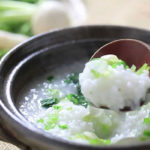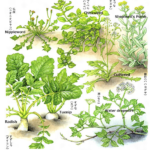![NANAKUSA Gayu (Resot of Seven herbs) [Japanese cuisine, Custom of late New Year's Days ]](https://spa-beaute.com/wp-content/uploads/2019/07/sevenherbs-1.jpg)
NANAKUSA Gayu (Resot of Seven herbs) [Japanese cuisine, Custom of late New Year’s Days ]
Every January 7th , Japanese people’s stomach of gluttony prone Holiday season.
The custom of NANAKUSA which is Japanese late New Year’s Days on January 7th.
It is cuisine which can gently caring in the “herbs”. Let’s try for beauty from inside the body.
Nanakusa (seven herbs) is, on the morning of the man-days Boys’ (January 7th), that the custom of eating resot containing seven kinds of vegetables. The porridge was put to carved this seven of vegetables is called a rice porridge with seven herbs, you can eat as fortune-telling, except for all kinds of diseases to pay the evil spirits.
Not only magical meaning, to rest the stomach tired in your New years cuisine, there is also indication that supplement the scarce nutrients in winter vegetables are scarce.
◇◆History of Kayu(porridge) in Japan ◆◇
The Yayoi era of porridge was born in Japan, and begans to brown rice was to porridge.
Winter is most scarce and seasonal green vegetables. Women in the spring will go out in the field, knob Nanakusa (seven herbs) issued a face, they compensate for vitamin that has been missing between in cold winter.
White rice porridge to the green of Nanakusa(seven herbs), is not only beautiful in appearance, was the food that can take a firm nutrition.
◇◆”Spring seven herbs” ◆◇
[Japanese] [Current name] [English Name]
せり セリ Water dropwort
なずな ナズナ(ぺんぺん草) Shepherd’s Purse
ごぎょう 母子草(ハハコグザ) Cudweed
はこべら コハコベ Chickweed
ほとけのざ 小鬼田平子(コオニタビラコ) Nippleword
すずな 蕪(カブ) Tuenip
すずしろ 大根 Radish
Nanakusa , 春の七草かゆ



Leave your comment
You must be logged in to post a comment.